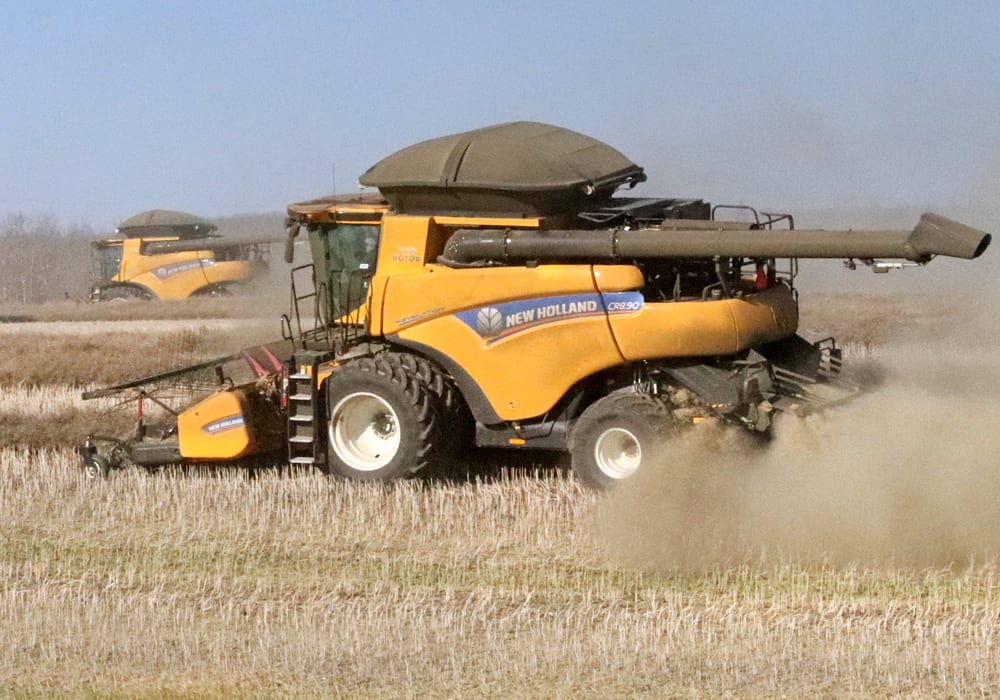The harvest window has closed again after rain followed by sub-zero temperatures and snow swept the Prairies Nov. 4-5.
However, most crops are now in the bin, thanks to a two-week window of warm, dry conditions opening up in October.
After multiple weeks of delay, many producers were able to return to their fields and complete harvest.
Depending on location, between 96 and 100 percent of this year’s crop has been harvested in all three prairie provinces, according to weekly crop reports and provincial crop specialists.
Read Also

Farming Smarter receives financial boost from Alberta government for potato research
Farming Smarter near Lethbridge got a boost to its research equipment, thanks to the Alberta government’s increase in funding for research associations.
Shannon Friesen, the government crop specialist in Saskatchewan, said harvest operations are 99 percent complete with some pockets of soybeans, flax, sunflowers and corn remaining.
“We never have 100 percent. There’s always a field somewhere,” she said.
Manitoba crop specialist Anastasia Kubinec said most of the major crops are completed except grain corn, which is about 50 percent harvested.
Corn growers will now have to wait for the ground to freeze hard enough to drive combines across now-softened fields.
However, she said some producers in northwestern Manitoba have as much as 25 percent of their crop out.
“They have a bit of canola, wheat and barley, but there are certain producers that the way things worked out got it in late, or had hail and they had to reseed and still had the majority of their crop out,” she said.
Harry Brook, Alberta’s crop specialist, said the recent cold snap means harvest is again at a standstill, which provincially is about 96 percent complete.
Weighing down that average is northwestern Alberta, which he said still has many acres left to harvest.
“They’re probably the worst off and they were the wet spot this year, so there’s pockets where there’s significant amounts of acres left, but it’s nowhere near as bad as it was in 2016,” he said.
Brook said September and October were the coldest months in more than 50 years (as well as March and April), according to the Alberta Climate Information Service.
Unless there’s a significant warm spell, he thinks field operations will be at a standstill for the rest of the year.
“We’re going to need probably close to a week of temperatures of at least 10 degrees with a wind before it’s going to be dry enough to harvest. The snow insulates and if it melts, then it’ll take longer for that crop to dry.”
Added Friesen: “Some of those crops may have to remain until either the ground freezes and they’re able to really get in there or until next spring.”
However, another upcoming window of warming is forecast, which might be the ticket for some farmers to fire up their combines and tractors — again.


















